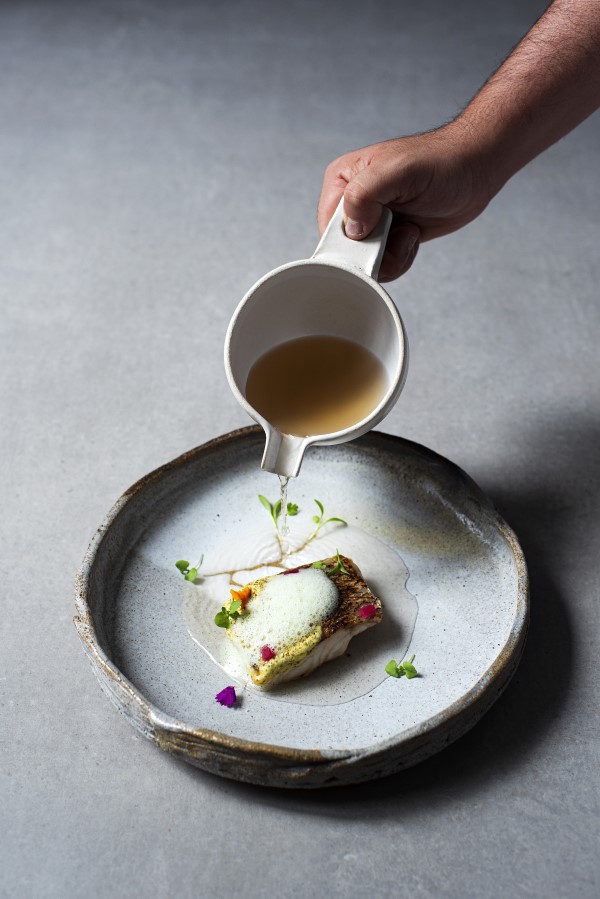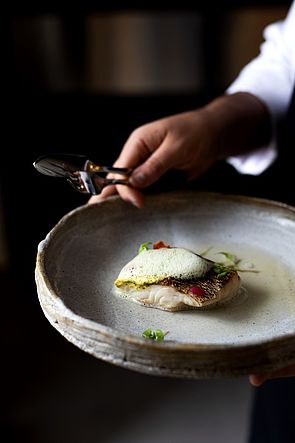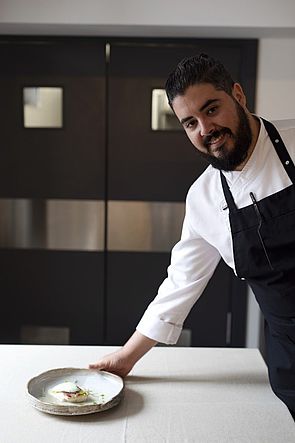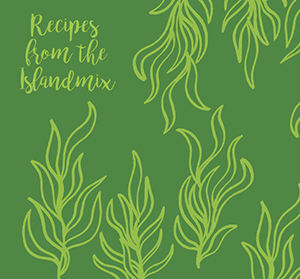Sea Bream Supreme
180 gr sea bream supreme.
300 gr of 10% brine.
Brine the sea bream supreme fillet for 15 minutes. Remove it from the brine and dry it thoroughly to prevent further salting. Place the portion in a vacuum bag, cover and apply a vacuum, leaving it to stand for two hours. The sea bream should be grilled, firstly on the skin side for about two minutes and then on the meat side for one minute. Remove and set aside for plating.
Papas arrugadas (salty potatoes)
900 gr potatoes ready for salting.
250 gr sea salt.
Place the potatoes, salt and water in a saucepan, but do not cover. Put on to heat and once the water comes to the boil, cover, lower the heat and leave to cook for 15-20 minutes. Once the potatoes are cooked, drain them and put them back in the pot on maximum heat to evaporate any remaining water, leaving just the characteristic salty crust.
Cream of papas arrugadas salty potatoes
900 gr papas arrugadas.
1,080 gr water.
Boil the water in a pan, add the potatoes and leave to infuse for 10 minutes. Remove from the heat, correct the salt level if necessary and put to one side.

Gazpachuelo mayonnaise with algae
Fish fumet. (Use the bones and the head of the sea bream, which will be toasted and smoked)
Algae mayonnaise. (Use two egg whites, sea lettuce, plankton and sunflower oil. Place all the ingredients into a blender, adding the oil little by little to ensure a smooth mayonnaise sauce texture)
Xantham gum
With the fumet now boiling, remove from the heat and add the algae mayonnaise. Add the xantham gum and blend to the right texture.
Firgas foamy watercress and Valleseco apples
3 kilos watercress.
2 apples.
3-4 gr sucro.
Liquefy the watercress together with the apples and add 3 grs of sucro to the resulting juice. Create the airy texture with the help of a Foam Kit (a type of hand-held blender).
Pickled red onion
100 gr red onion.
Oregano.
20 ml mature wine vinegar.
5 ml water.
Salt.
Cut the onions into cubes, place them in a recipient and add the vinegar, water, oregano and salt. Allow to pickle for half an hour.


Mario Yamuza explains the origin of his recipe: "The inspiration behind the dish came about thanks to days spent on the beach, on fun sea and fishing camping trips. That is why I chose to use sea bream, a highly prized fish from our local coasts. I wanted to use seaweed, which is also very common on the Canarian coasts, as an accompaniment, as a way of supporting the magnificent work being done at the Spanish Algae Bank (BEA in Spanish), a centre belonging the University of Las Palmas de Gran Canaria.
The Spanish Algae Bank is located at the Taliarte dock in Telde, where they offer an R&D&i service managed by the Canary Scientific and Technological Park Foundation at the ULPGC."

30º 'Dish-enhancing' secret ingredient
Algae
The emergence of the 'Blue Economy' on the islands, alongside consumers’ sustainability awareness, has been gradually revitalising the position of algae as a food product. Research into its nutritional values is a field in which the University of Las Palmas de Gran Canaria has considerable experience, mainly thanks to the Spanish Algae Bank, located on the island. Hence, the use of algae is quite common in Gran Canaria, either as a main ingredient or as a condiment. Algae has opened up a whole new world of flavours, and is gradually taking off at the island’s more innovative kitchens.